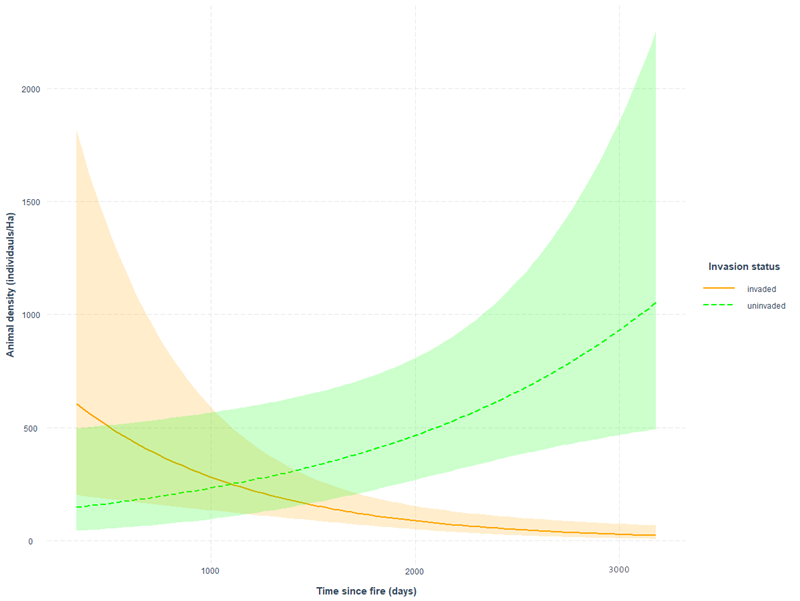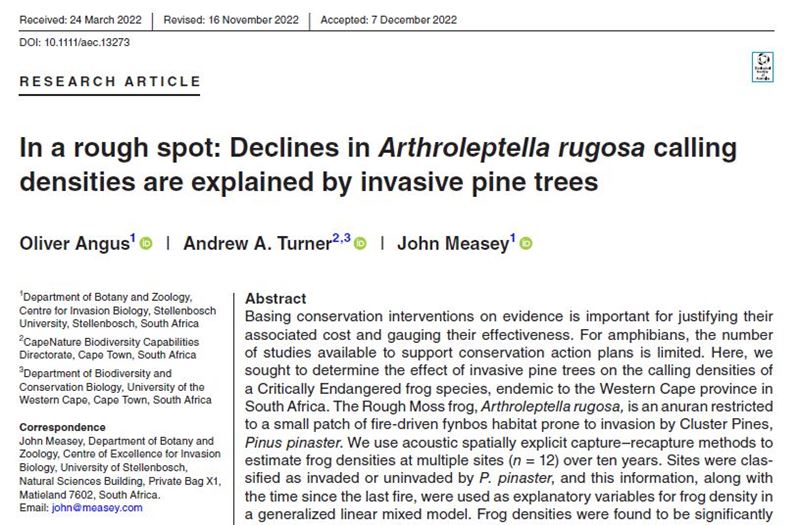A big step toward conservation of Rough Moss Frogs
Ten years is a relatively short period of monitoring data, yet it can reveal important ecological interactions that can inform conservation managers about on the ground decisions. In this study, published today, we show the clear synergistic relationship between fire and the invasion of pine trees on populations of moss frogs on the Klein Swartberg.
In the figure below, you can see how the density of calling male Rough Moss Frogs increases in the absence of invasive pine trees, but declines in their presence. In addition, our analyses indicated that this decline was manifest when fire interacted with the invasion.

We obtained the density estimates of calling frogs in this study from a microphone array using the aSCR methodology (described here). We employed this approach at 12 sites on the Klein Swartberg over 10 years with 35 recordings. This included the initial work undertaken by Debra Stark (see here). Debra's work is published in a book chapter (see here). Currently, the invasion of pines on the Klein Swartberg is incredible, but undergoing control through block burning.
A picture of Oliver Angus among the pines on the Klein Swartberg in June 2021.
Further reading:
Angus, O., Turner, A.A. & Measey, J. (in press) In a Rough Spot: Declines in Arthroleptella rugosa calling densities are explained by invasive pine trees. Austral Ecology https://doi.org/10.1111/aec.13273


